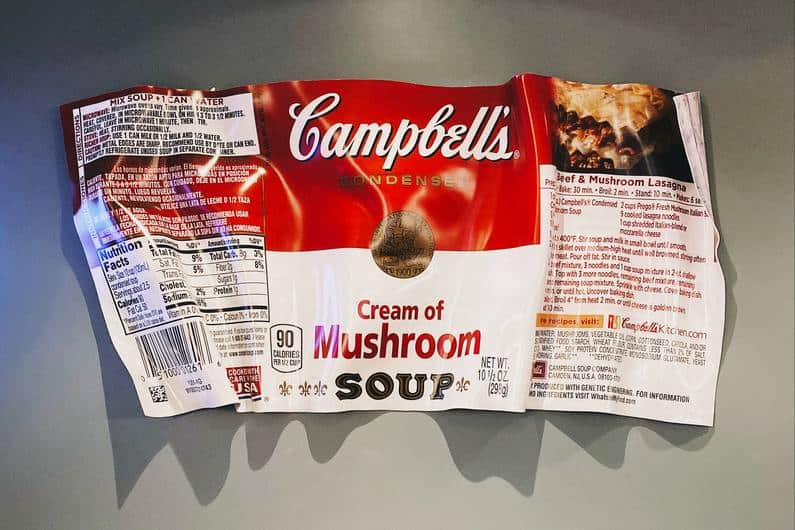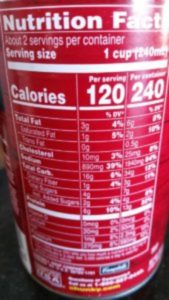 People often decide they want to adopt a healthier diet but have a hard time knowing where to start. Mostly they jump right in trying to change all of their eating habits at once. But this just leads to overwhelm and giving up. So my first piece of advice for achieving a healthier diet is to read food labels. Every one of them!
People often decide they want to adopt a healthier diet but have a hard time knowing where to start. Mostly they jump right in trying to change all of their eating habits at once. But this just leads to overwhelm and giving up. So my first piece of advice for achieving a healthier diet is to read food labels. Every one of them!
According to Sugar Science at UCSF, “manufacturers add sugar to 74% of packaged foods sold in supermarkets”. That’s hard to believe unless you read those labels. Once you start to pay attention prepare to be shocked by what you find out!
Learning to read food labels is an easy thing to do and will seriously educate you about what you’re consuming. But in the beginning, you’ll most likely be confused about what all the information means. Trust me, if you keep at it you’ll become a pro over time!
Remember that I’m a certified health coach and would love to help you with several options for coaching sessions. You don’t have to figure everything out on your own and go it alone!
Start with servings and calories
A great place to start when reading food labels is the serving size and the number of calories in each serving. You’ll notice that most packages aren’t actually just 1 serving. There may be 3-5 servings or more in that entire bag. Even the small bags may have more than one serving!

Here’s a good example: My husband went on a hunting trip with his buddies and bought himself an 18.8oz can of soup for a lunch meal. It turns out that 1 can is actually considered 2 servings! Which is weird because they’re so small!
BTW, I recently heard someone comment that a donut box food label showed that a serving size is ⅓ of a donut! So the calories they list are for that amount, not a whole donut. Now that’s just downright wrong!
But getting back to my husband’s soup story. That particular soup company makes the serving size obvious on their label. They have two columns: one reads “Per Serving” and the other reads “Per Container”. But not all food labels do this for you, so you need to pay attention. Otherwise, you won’t know how many calories (or anything else) you’re actually ingesting.
As another example, I’ve noticed that most candy bars I buy (on the rare occasion that I buy one!) contain 2 servings per package. This is very good to know, especially when just half of the bar is 200+ calories! My husband and I usually split one because it’s meant to be a treat, not a meal!
Pay attention to the “highs” and “lows” on food labels
It takes a while to get a sense of what’s good or bad when you read food labels. And having said that, it’s not a great idea to label ingredients as “good” or “bad”. It’s better to think in terms of “high” or “low” when it comes to the quantities of nutrients or calories in packaged foods.
Read any food label and notice the column “% Daily Value” (DV). This is referring to how much of that nutrient is in one serving of that food that’s contributing to your total daily calories. The FDA says that 20% DV or more per serving is considered high, and 5% DV or less is considered low.
So back to my soup example. A can of Campbell’s Cream of Chicken Soup has 870mg of sodium in one serving. The serving size is ½ cup, and there are 2.5 servings in one can! That means if you have the whole can (and who wouldn’t?), you would get 2,175mg of sodium for just that part of your meal.
The FDA puts the daily limit of sodium at 2,300mg. So the % DV of sodium for that one can of soup is about 95%!
Our bodies need some sodium to function properly but too much sodium is associated with high blood pressure. According to the CDC, about half of all U.S. adults have high blood pressure, and over half a million die every year because of it.
You don’t have to get all scientific about it, just start paying attention to the mcg, mg, and g amounts (micrograms, milligrams and grams). Once you get used to reading food labels, you’ll figure out what seems high or low for your particular concerns.
My husband has always had high cholesterol, so I pay attention to the fat and sodium levels in any foods he may be eating. For myself, I’m more interested in knowing the sugar and salt content in the foods that I eat. You need to decide for yourself because it’s all about your individual preferences and health concerns.
Nutrients listed on the food label
Food labels list the things you should be most concerned about when it comes to your health. These include:
-
- Total fat
- Cholesterol
- Sodium
- Carbs
- Sugar
- Fiber
- Protein.
The label then lists some vitamins or minerals that may or may not be contained in the product. These might include:
-
- Vitamin D
- Iron
- Calcium
- Potassium
- And any other nutrients that happen to be in the product
These items were chosen because they cause problems when we either get too much of them (fat, sugar and salt) or too little (fiber, Vit D, calcium, potassium, iron).
Ingredients listed on the food label
Finally, the label will list all of the individual ingredients that went into making that product. I was enlightened one day a few years back when I had a can of tomato soup (yes, I’m still on the soup thing!) at my in-laws’ home on a cold winter day.
On any label, the ingredient listed first is the one with the highest quantity in that product. After that, in descending order, are the ingredients with lesser and lesser amounts in that food. So the first ones listed are usually the ones to be most concerned about.
This particular tomato soup that I chose listed tomatoes as the first ingredient. Of course. But the next ingredient was high fructose corn syrup! I was more than a little shocked to know that HFCS was in my tomato soup! I’m guessing that you’ll be surprised too when you start to read food labels and learn what’s actually in your processed foods.
Soups, by the way, are known to be very high in sodium which is what makes them taste so good! But if you’re concerned about sodium, and we all should be, then you might want to look for the lower sodium options out there. Or just make your own! According to the CDC:
“Most of the sodium Americans eat comes from packaged, processed, store-bought, and restaurant foods.”
It’s always better to cook your own homemade meals rather than relying on processed foods as your go-to. That way you know exactly what you’re ingesting and you can control the ingredients you want to control.
Related article: Tips for a healthier diet: Accept meal prep!
My Final Thoughts
If you want a healthier diet, then you need to read food labels so you’re aware of what you’re consuming. Without knowing what’s in your food means you’re just trusting the food giants with your health. And that’s not very smart considering their goal is just to make money, not keep you healthy!
Reading food labels makes it easier to decide which foods are “junk”, or at least not worth the calories. And it also makes it easier to compare products. This will help you to choose the healthier option. You can’t do better if you don’t educate yourself!
Here’s the last piece of advice I’d like to give you on eating healthier. If you eat foods without labels they don’t have any added sugar, fat, salt, or anything else that’s bad for you. Why? Because they’re natural.
Natural foods don’t need labels because nothing extra is added to them. So go for the real food that isn’t processed and you don’t have to worry about what might be slowly killing you!
Related article: Change your diet for a healthier body.
Let me know in the comments below what interesting things you’ve learned from reading food labels?

